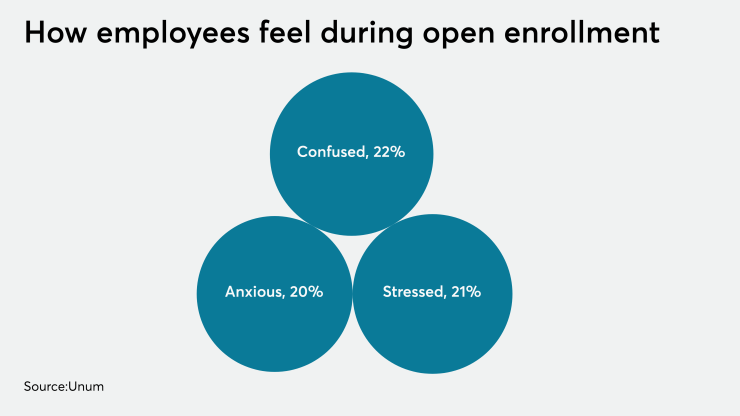When it comes to open enrollment employees often finish the process with more questions than when they started. They are finding it increasingly difficult to interpret their benefits plans and more often than not, they don’t fully understand what they signed up for.
About 35% of employees have little to no understanding of their healthcare coverage, and 62% feel their employer doesn’t serve as a resource for their healthcare-related questions, according to a survey by
It is the responsibility of HR departments to work with employers to develop actionable strategies that will positively impact employees’ understanding of their benefit options during open enrollment. Because there is no one-size-fit all approach to educating employees on open enrollment and their specific benefits, HR professionals should be flexible and adjust to the natural ebb and flow of company culture.
It is crucial that HR professionals are not married to just one method of educating employees. With the various learning styles and concerns associated with healthcare benefits, HR departments need to work together to brainstorm tactics that will not only appeal to the different learning styles, but also get employees excited about their benefits. Companies should use both physical and digital communication tactics to educate workers about open enrollment; some workers may prefer messages via email and text, while others may be more responsive to flyers or posters around the office. The more information employees understand about the process, the more engaged they will be.
HR professionals must also consider that workforce demographics are constantly changing as younger cohorts enter each year. To gauge what matters to each individual prior to open enrollment, HR can develop surveys that pinpoint the needs and wants when it comes to benefits. This will allow HR to identify how to best meet the needs of the different demographics within the workplace. Developing initiatives based on employee feedback allows HR to tailor benefit plans that are more appealing to employees.
When developing these plans, it is best for HR professionals to consider the different personas and learning methods within a company’s workforce. A good practice is to lay the groundwork with a benefits package for staff to review, follow up with at least one email after the review, and schedule meetings to answer questions.
Offering detailed information on benefits packages prior to open enrollment gives employees the opportunity to thoroughly review the different options, or look at how plans may have changed since their last open enrollment.
Employers should provide staff with a digital blueprint of details on healthcare plans, likely via email. It’s important to stay in constant contact with employees following the initial benefits discussion, updating and reminding them of important details and deadlines involving their plan.
It’s also recommended to hold a staff meeting following the initial open enrollment meeting to serve as a debrief. Employees might be intimidated to ask questions in front of a benefits provider or broker on the spot, but once they’ve had time to digest the plan, they may be more comfortable asking questions in a more casual setting.
Because employees are the heart of a company, it is important that they are satisfied and feel supported during crucial HR moments like open enrollment.
By listening to them, employers and HR departments can work together to improve the open enrollment process and benefit offerings each year – a task that can successfully be completed by listening to employee feedback and taking action.
According to a
Open enrollment is often treated like a one-off event, and a process that many workers dread. For it to be successful for both the company and employees, it should be treated as an ongoing activity that maximizes the return on benefits investment, as well as increases employee well-being and satisfaction.






